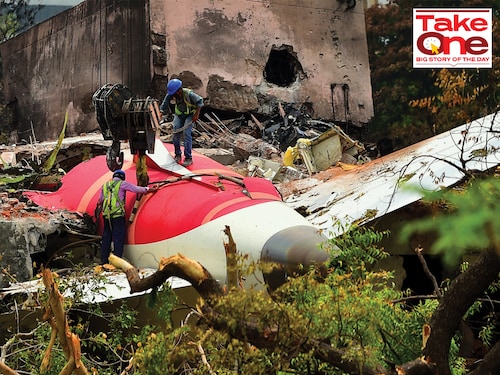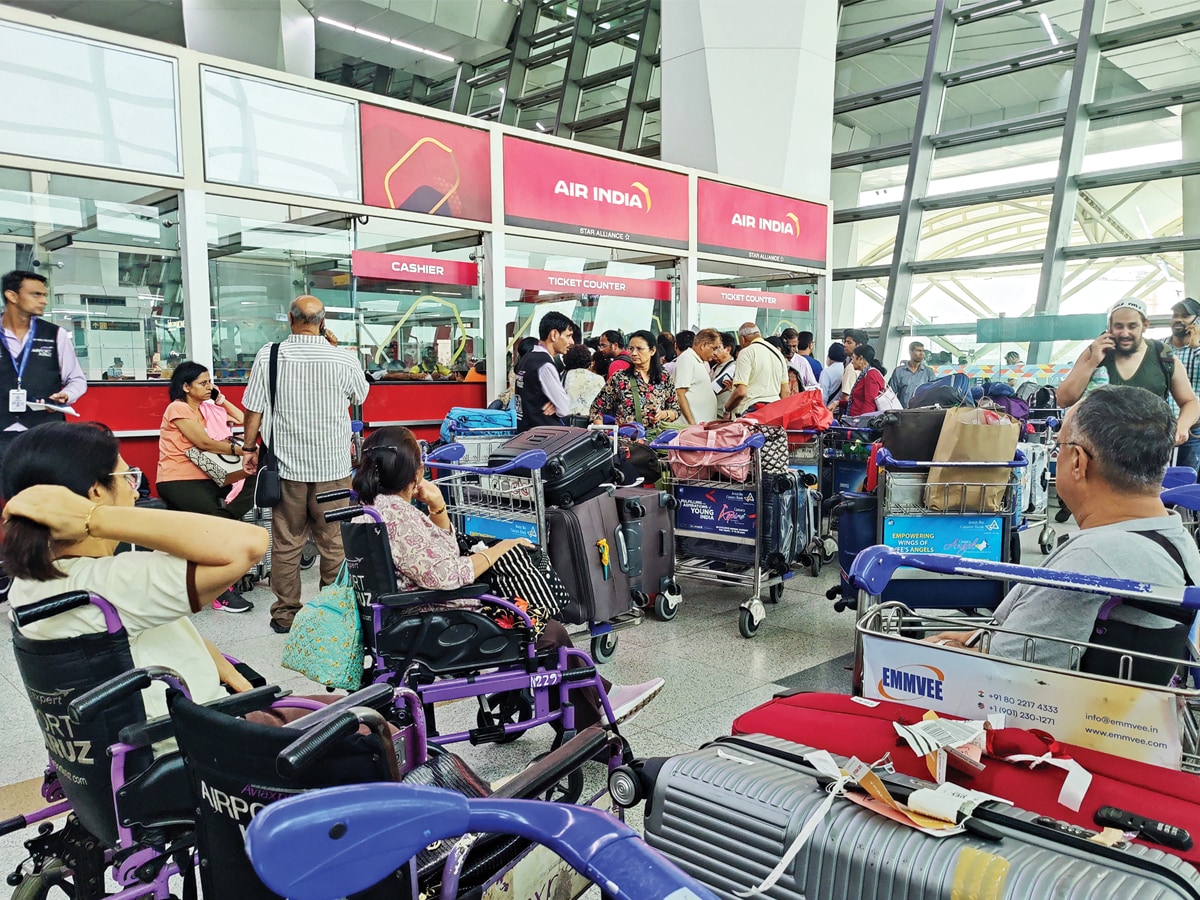Air India crash: Lessons for the Indian aviation ecosystem
The crash has led to heightened scrutiny of Air India and the aviation watchdog. Amid obvious questions, experts say there are learnings for the entire sector


An unfortunate crash in the world’s fastest-growing aviation market has turned the heat on its oldest airline and its regulator.
Since Air India’s flight AI 171 crashed during take off in Ahmedabad on June 12, the country’s aviation sector, which was clocking some serious growth, has been dealing with a fair bit of uncertainty, concerns, and even scares, with technical snags, cancellations and emergency landings seeing a rise.
While a significant number of these disruptions were faced by Air India, IndiGo too had some scares. On June 21, a flight operated by India’s largest airline made an emergency landing in Bengaluru after pilots declared ‘mayday’ due to “insufficient fuel", according to reports. Air India, meanwhile, has temporarily reduced both domestic and international operations, raising eyebrows among flyers.
As if these weren’t enough, on June 21, India’s aviation watchdog, the Directorate General of Civil Aviation (DGCA), asked the Tata group-owned Air India to remove three officials, including a divisional vice president, from all roles and responsibilities related to crew scheduling and rostering over serious lapses. “Repeated and serious violations voluntarily disclosed by Air India concerning flight crew being scheduled and operated despite lapses in licensing, rest and recency requirements," says the DGCA order.
“We must realise that for any airline, anywhere in the world, an accident of this scale will certainly lead to many questions being asked," says Jitender Bhargava, executive director at Air India, and author of The Descent of Air India. “But it will certainly bounce back, and ultimately what we are seeing will only be a temporary setback."

While rumours swirl around about what caused the Ahmedabad-Gatwick flight to crash, no official cause has been revealed. It is the first time that a Boeing Dreamliner has been involved in a mishap of this scale. Airline crashes are often caused by reasons ranging from mechanical failures to crew error and external factors such as bird hits, among others. Authorities are currently studying the black box of the aircraft found at the crash site.
“There appears to be heightened media scrutiny at the moment, even though many of the technical and operational issues being reported are routine in an aviation ecosystem of this size and complexity," says Alok Anand, chairman and CEO of Bengaluru-based Acumen Aviation, an aircraft asset management and leasing company.
Anand reckons that recent incidents could be a result of airline staff exercising extra caution in the wake of the fatal accident. “It’s bound to be on their minds," he adds. “In my experience, both as a former aircraft maintenance engineer and now as a frequent flyer, I’ve encountered numerous situations such as rejected take-offs, go-arounds, diversions or low-fuel events. However, I’ve rarely seen the level of media attention and dramatisation that these routine occurrences receive in India, where even standard operational issues often get amplified. Another reason I can think of is that our flying public mostly comprises first-time flyers, so no doubt there is enhanced social media scrutiny too."
It’s not just airlines, particularly Air India, that are experiencing increased scrutiny. The DGCA, has ordered a special audit framework for a 360-degree evaluation of the country’s aviation ecosystem. “Traditionally, regulatory and safety oversight functions within Indian aviation have been conducted in silos, with different directorates performing inspections and audits specific to their respective domains," a statement from the DGCA said. “The goal is to generate a 360-degree evaluation of the aviation ecosystem, reflecting both its strengths and areas needing improvement."
On June 24, as part of this evaluation, the DGCA carried out surveillance at two of the country’s biggest airports in New Delhi and Mumbai and found multiple deficiencies. These include not recording defect reports generated by the aircraft system in the technical logbook, a simulator not matching with the aircraft configuration, and work orders not being followed during maintenance. “This process of comprehensive surveillance will continue in future to detect hazards in the system," the DGCA said.
For Air India, which was hoping for a turnaround under the Tata group, the recent troubles are certain to cause distress in the immediate term, especially when it comes to customer preferences.
Already, the airline’s Dreamliner aircraft have had to undergo thorough safety inspections of its 33 Boeing 787 aircraft. “Following the review, the DGCA has confirmed that our Boeing 787 fleet and maintenance processes fully meet safety standards," said Air India CEO Campbell Wilson in a statement. But the increased scrutiny has led to a cut in operations, which is certain to add more flyers for IndiGo.
From mid-July, as a result, Air India has reduced its international operations by 15 percent, while domestic operations have been curtailed by 5 percent. “I would think that all the recent cases involving Air India might be due to extreme caution by the staff in the wake of the tragedy," Bhargava says. “People talk about the age of the aircraft and the quality of Air India. We must remember that until the new aircraft came for the president and the prime minister, Air India’s 747 aircraft were used." Air India is currently awaiting the delivery of more than 500 aircraft, which includes a mix of Boeing and Airbus aircraft.
 Passengers in front of an Air India ticket counter, as flights got delayed and cancelled in the wake of Israeli strikes on IranImage: Bhawika Chhabra / Reuters
Passengers in front of an Air India ticket counter, as flights got delayed and cancelled in the wake of Israeli strikes on IranImage: Bhawika Chhabra / Reuters
“Air India requires a return to basics, and it must address the culture issues within the airline," says Satyendra Pandey, managing director of aviation services firm AT-TV. “Denying that these exist or wishing them away is simply not the solution."
Air India’s turnaround has been in the works since 2022 after the Tata group completed the acquisition. In September 2022, it unveiled a new plan titled Vihaan.ai, which translates to the dawn of a new era in Sanskrit. According to the plan, Air India says it has set itself clear milestones focussed on growing its network and fleet, developing a completely revamped customer proposition, improving reliability and on-time performance, and taking a leadership position in technology, sustainability and innovation, while aggressively hiring industry talent. Between 2022 and 2027, the airline planned to increase its market share to at least 30 percent in the domestic sector while significantly growing the international routes.
“Air India is undoubtedly facing headwinds," adds Anand. “The recent decision to scale back operations suggests that the airline has identified specific areas requiring attention, and a reduced schedule may provide the necessary bandwidth to implement corrective measures."
The accident is the first instance of an air crash under the Tata group, which had laid out an ambitious plan to become a market leader in one of the world’s fastest-growing aviation markets. India is the third-largest aviation market, after the US and China, and has more than 1,000 aircraft under order, a bulk of which has been placed by Air India and IndiGo. Together, the two airlines account for as much as 90 percent of the domestic market"

“The horrific crash of Air India flight 171 has lessons for the entire ecosystem," adds Pandey of AT-TV. “It is imperative that lessons are ingrained, and procedures revisited—important for the aviation sector, for consumers, for credibility, for confidence and the country. Regardless of findings as to the nature of the crash, across the industry, consistency of process, communication to all stakeholders, and issues specific to airlines need to be addressed. And this must be done at a war footing, given that safety is the first fiduciary duty of every airline the world over."
Then, there is also the need for a strong whistleblower policy that can help the industry as the number of aircraft grows in the country. “Whenever a serious accident occurs, it is only natural for the country’s aviation safety record to come under scrutiny. While this often leads to a renewed focus on adherence to standard operating procedures, it also highlights the need for stronger frameworks around whistleblower protection—an area that extends beyond aviation and affects many industries," adds Anand.
“Having a safety reporting system or a suggestion box at MROs (maintenance, repair and operations) and airlines is not sufficient on its own. What’s also essential is the implementation of a formal, well-protected whistleblower mechanism, similar to those in place in the US and several other countries, to ensure that safety concerns can be raised without fear of retaliation.
First Published: Jul 07, 2025, 10:56
Subscribe Now